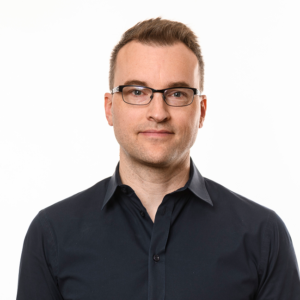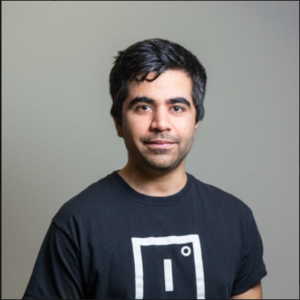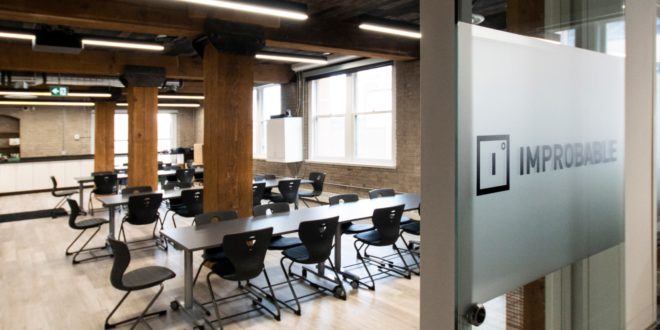Improbable, the company behind SpatialOS, announced earlier this year that it was entering games development for itself. Two teams are being created, one in London near the company’s headquarters and, arguably more excitingly, a team in Edmonton, Canada, lead by a Bioware veteran and working on a new RPG title in Unreal, which will leverage SpatialOS’ huge potential.
That veteran is Aaryn Flynn, who spent 20 years at Bioware and worked on Baldur’s Gate 2, Star Wars: Knights of the Old Republic and Jade Empire, eventually becoming the studio’s general manager and overseeing development of the Dragon Age, Mass Effect and Anthem franchises.

“We have a vision in mind that we want to create and we’re prototyping parts of that,” Flynn tells us when we ask how far the new studio has progressed. “There is a genre – we just want to build an RPG. I really think RPGs are due for another revolution. And I think SpatialOS offers so much in terms of technical things you can do,” he explains in his new role as general manager of Improbable North America. Helping Flynn achieve that are currently around 40 staff. With a good chunk of those having worked with him before.
“Personally I’ve worked with about a third of the current staff,” Flynn reveals, though he’s keen to impress that the new studio isn’t just an old boys club for former Bioware staff: “Absolutely not. I take team culture and team mix very seriously – diversity, a great mix of folks from different backgrounds and different experiences, is vital because when you’re problem solving you want diverse thoughts and experiences.
“So while we’re very proud to have some great veteran developers from great RPGs of the past, at the same time we’ve got folks coming in from Ubisoft, from other studios around Canada and from the US. And it’s our expectation that they bring a perspective that we don’t have. We’re really encouraging them to do that because maybe they’ll see a use for Spatial that we haven’t considered. That’s the fascinating problem of new technology. What’s the really cool way you’re going to figure out how to use it.”
In this day and age though, a forty-person team isn’t going to be able to create a huge handcrafted RPG of the like that made Bioware’s name for instance. Our guesses lean towards a game centred around player interaction or some procedural generation.
Flynn indicates that those are possible approaches, noting that he’s putting his faith in the tools available today: “I used to be tools programmer. So I’ve always got a place for them in my heart. In many ways, SpatialOS is a tool. So we definitely are investing and thinking of ways that tools can either be a part of Unreal or a part of SpatialOS to provide those kinds of content systems that a player can experience and say: ‘Oh wow! That’s new and interesting, I haven’t seen that kind of thing before’.”
He also notes that the team size will increase: “While we are 40 people, we’re still growing, still heavily recruiting. But it’s not about having the largest team in the industry. It’s about having a great team culture that is supported by amazing technology and that feels very empowered to do cool things.”
SPATIAL TO BREATHE
The idea of mixing SpatialOS’ ability to create vast, highly populated and persistent online worlds, married to the experience of veterans from Bioware (and elsewhere) is a tantalisingly prospect. Flynn won’t yet be drawn on the details of course but is willing to discuss what SpatialOS might bring to the table.
“It’s about ultimately empowering players to do really cool things. Because that’s what roleplaying used to be, back in the day, with pen-and-paper even. A good DM would help you understand what’s possible. What can I do? You can do whatever you want! The DM was great for that. I believe we’ve lost some of that in RPGs today, at least in certain mainstream RPGs, although I give a lot of credit to games like Divinity: Original Sin and those kind of things. But Spatial is a great force to help us look forward. It’s a lot of fun. It is a fantastic opportunity,” Flynn enthuses.
Scale can come with its own problems, though. The game must make each and every player relevant in the world, providing a sense of agency, despite them being potentially just one of millions.
Flynn responds: “We’re lucky that Spatial offers that ability to scale. But, as we’ve talked about around our team, if we’re going to get to a big number of players, for example, we want to achieve that via a series of intimacies with smaller numbers of players. We want to make sure that there are great mechanisms and great ways for those players to interact. And if we’re right about some things, having some really good relationships and connections between small groups of players will then allow them to congeal into larger groups of players.
“Spatial lets us focus on making sure that we get these relationship mechanisms functioning, working, successful and additive to the gameplay experience such that then we don’t worry about what happens if X number of players get together. We benefit from being a first party studio in the sense that we get to focus on design and on the creative side of things, trusting that the technology is there and functioning.
“And through our designs I think we’ll push the technology, we’ll stress it, I think we do things that as a first party team should really help our partners benefit.”
EDMONTON CALLING

To look at the broader picture of why Improbable has started its own development teams and how it hopes to benefit from the investment, we then turn to Improbable founder and CEO Herman Narula.
“We’ve been wanting to do this forever,” he says. “We just haven’t been at the point of maturity where we could, in terms of tech, network, developers or understanding ourselves. The real reason is the same reason Epic is doing it, or anyone is doing it: because having studios is a great way to support your partners. It creates confidence. People are like: ‘OK, if Aaryn and a bunch of people are working on these things, then I know you’re dealing with the problems we’re dealing with’.
“You need to be actively playing with it yourself to really understand how to make the best possible tool. We’re not trying to compete with our customers, we’re working on stuff that’s fairly esoteric in comparison to what most people are making. We think it’s going to become something people look at and say: ‘You’ve taken that crazy risk, so now I might do it.’ As an infrastructure provider we succeed when our customers succeed.”
The timing was just right as well, Narula further says: “Frankly there was the opportunity, the turmoil we saw in the industry last year, with people leaving different roles. It created an opportunity to really build a studio quite fast and we got forty people in less than a year. And an incredible quality of people that normally you would just not be able to have. That’s amazing.”
Narula explains that the London development team will be able to work closely with the core engineering team, who is also based in the capital.
“However, Edmonton is really just down to the quality of people,” he continues. “It was an incredible thing to work on, recruiting people whose combined experiences: Mass Effect, Dragon Age… You’ve got people who are legends in the industry, who have built incredible games we are all passionate about, we have some incredible tech directors there as well. Being located in Edmonton meant we can tap into that talent pool. And with the RPG focus of the studio, it was the place to be.”
Narula says that though some of the team are working on the platform in some respects, he strongly emphasises that “100 per cent of people there are working on the game, but the act of working on the game actually creates tools.”
TIME AND SPATIAL
![]() Coming back to Flynn, we enquire about the timescale for his team’s SpatialOS-powered RPG title. Does he have a series of milestones set, or is it more experimental in timescale too?
Coming back to Flynn, we enquire about the timescale for his team’s SpatialOS-powered RPG title. Does he have a series of milestones set, or is it more experimental in timescale too?
“Good project management and business planning requires some focus,” he answers. “I’ve worked on games that have taken seven years and I really would not like that to happen this time! But I do think we feel a sense of excitement about what we’re doing. It’s a great time in the industry. The Stadia stuff is awesome for instance, there’s some really cool things coming out. To have some content, an experience that players could get to sooner rather than later is an important touchstone for me.
“We have more flexibility now to put things out there and let players engage with the game. We can put out things that are segments, in certain forms, and then we can take feedback from them. And I’m actually really really excited about that,” he explains, unsurprisingly when compared to the huge stress of a big retail launch with a Bioware title.
“Now there are alternatives that work for players and at the end of the day it’s all about them. If it works for players then let’s explore that, let’s engage with that.
“I think we have an opportunity to really excite players and give them something that they’re going to hopefully appreciate. And I think that’s the ultimate measure. Herman and others at Improbable have been just wonderful about that, saying: ‘If we’re going to make a game, we want to make a game that is first and foremost for players’.
“We wouldn’t do this if we didn’t believe SpatialOS had something to offer in that conversation. So the challenge for us is how we use that platform, use that technology, to do something that’s really going to excite players. And I think we’ve got some great ideas on that.”

 MCV/DEVELOP News, events, research and jobs from the games industry
MCV/DEVELOP News, events, research and jobs from the games industry




